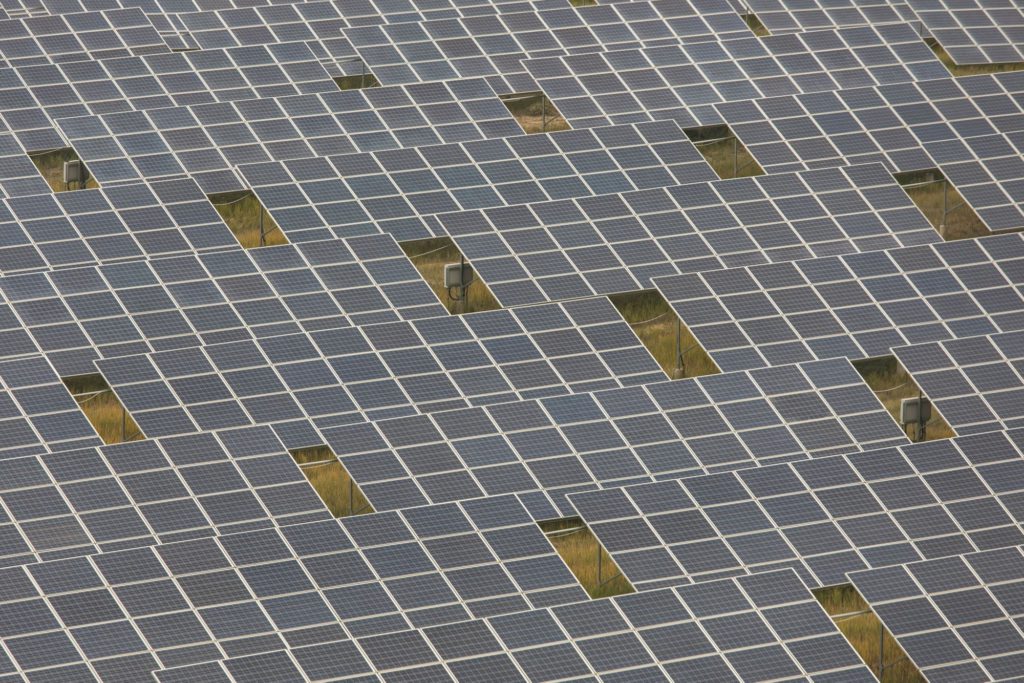(Bloomberg) — The majority of China’s massive desert renewable power project will be built after 2025, and most of the capacity in the first phase will come from solar, according to a researcher from the country’s largest grid operator.
The details fill in some gaps about the country’s plans to build 455 gigawatts of wind and solar power across the country’s vast desert expanses, which were announced by President Xi Jinping in October. Researchers and officials spoke Thursday at an event in Beijing hosted by the China Electricity Council and solar manufacturing giant Longi Green Energy Technology Co.
About 200 gigawatts will be installed before 2025, with another 255 gigawatts coming between 2026 and 2030, according to Li Qionghui, a researcher with the State Grid Corp. of China. Of the pre-2025 projects, about 50 gigawatts will be fed into local grids while 150 will connect to long-distance transmission lines, she said. Post-2025, about 90 gigawatts are expected to be local with 165 destined for far-away use.
A first batch of 97 gigawatts will connect to the grid through 2023 and will comprise of about 60% solar and 40% wind, Li said.
The massive build-out will help increase clean energy generation that will eventually help the country meet its goals of peaking carbon emissions by 2030 and reaching net zero by 2060.
Read more: China’s New Renewable Project Rivals All Wind and Solar in India
Including the desert projects, China will install 500 gigawatts of wind and solar between 2021 and 2025, and as much as 700 gigawatts in the second half of the decade, said Shi Jingli, a researcher with the National Development and Reform Commission. That would bring the country’s renewable capacity to more than 1,700 gigawatts by the end of the decade, far exceeding central government targets.
In the near term, though, clean energy in the desert will rely on coal power plants as backup to provide steady streams of electrons to the grid, Shi said. The country will build new coal plants and upgrade old ones to provide the balancing capacity.
“It is not feasible to only transmit wind and solar power,” Shi said at the event Thursday.
China has come under scrutiny for its continued support of the dirtiest fossil fuel despite increasingly dire warnings from climate scientists about the world’s current warming path. Chinese lenders have helped coal companies raise about $10 billion selling bonds so far this year, data compiled by Bloomberg show, more than double the same period of 2021.
Also at Thursday’s event, Longi’s president Li Zhenguo called on the solar industry to focus on improving the efficiency of its products amid rising prices. Enhancing solar technology to produce more power from each cell is the best way to reduce costs in the longer term, he said.
Solar prices have remained high this year after a surprise rally in 2021 following a decade of steady declines. Still, the increases have been relatively small compared to soaring costs of power plant fossil fuels like coal and natural gas.
As a company in the downstream of the solar supply chain, Longi does not have complete control on prices of modules, Li said. He expects solar prices to stabilize soon, and any further increases will likely be the result of continued high demand for panels, he said.
More stories like this are available on bloomberg.com
©2022 Bloomberg L.P.











